Rome is home to some of Italy’s most famous food. Here’s our insider’s guide to our favorite Roman Food recipes that you can make at home! Until you get the chance to visit Italy, you can use all of our authentic Italian pasta recipes to experience a taste of Italy at home.
At the top of our list of must-try Roman food? Roman pasta dishes, of course! There are four pillars of Rome pasta—including some you probably haven’t heard of.
Roman Food Recipes: Pasta Pillars
Spaghetti alla Carbonara (Spaghetti Carbonara)
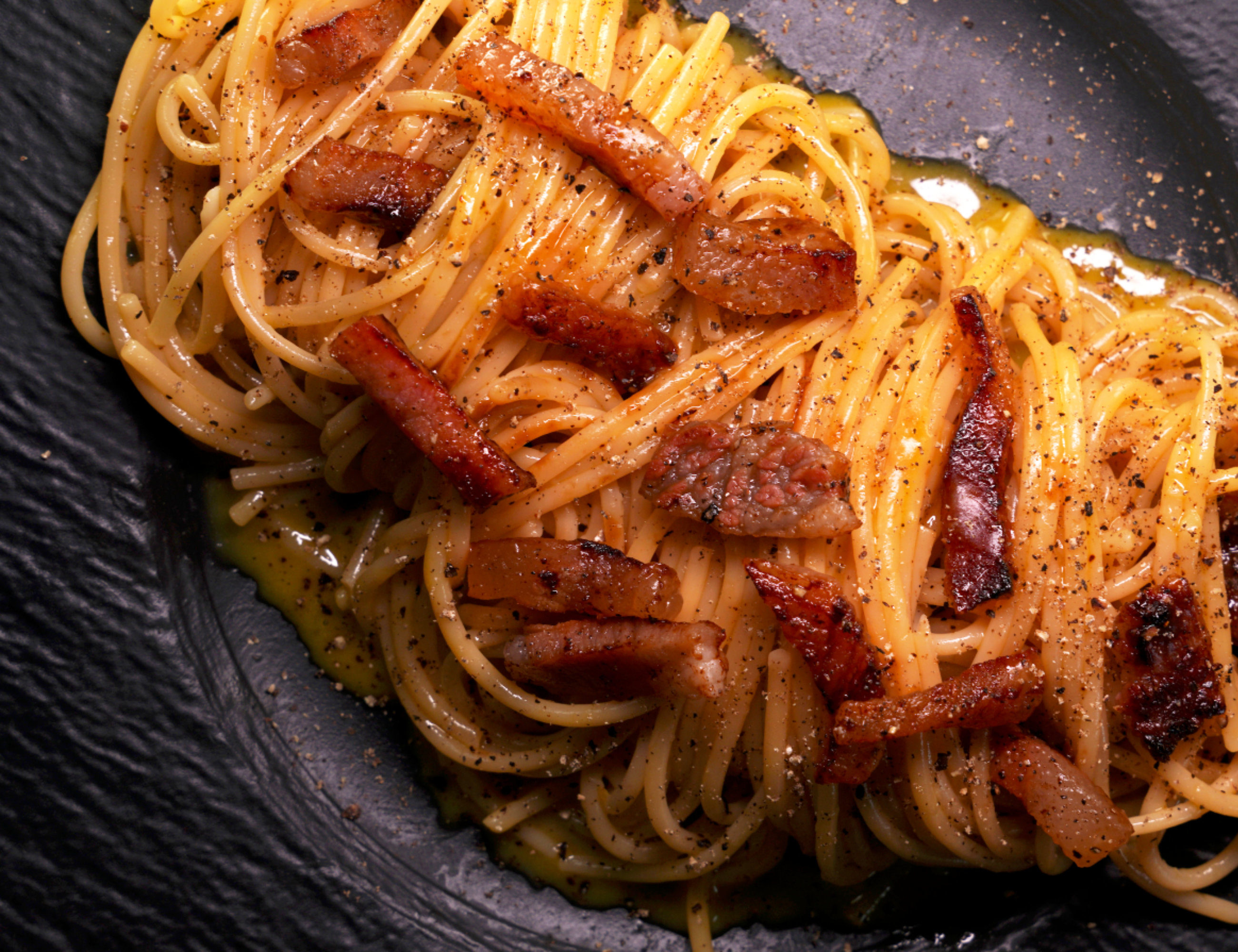
Everyone has heard of Spaghetti Carbonara, but have you ever tasted the real deal? The authentic Spaghetti Carbonara recipe made in Rome has just these ingredients: egg, pecorino romano cheese, black pepper, pasta. That’s it!
If you find yourself in a Rome restaurant and see a Spaghetti Carbonara with cream and bacon on the menu, you’ve probably landed in a tourist trap. While there are some origin stories about Carbonara that suggest cream and bacon might have been ingredients in the very first version (see our fascinating WWII Carbonara article), this is not (repeat NOT) considered the traditional Carbonara today in Rome or Italy in general.
Luckily, you can make a restaurant-quality carbonara in Rome with our traditional recipe:
Spaghetti Cacio e Pepe
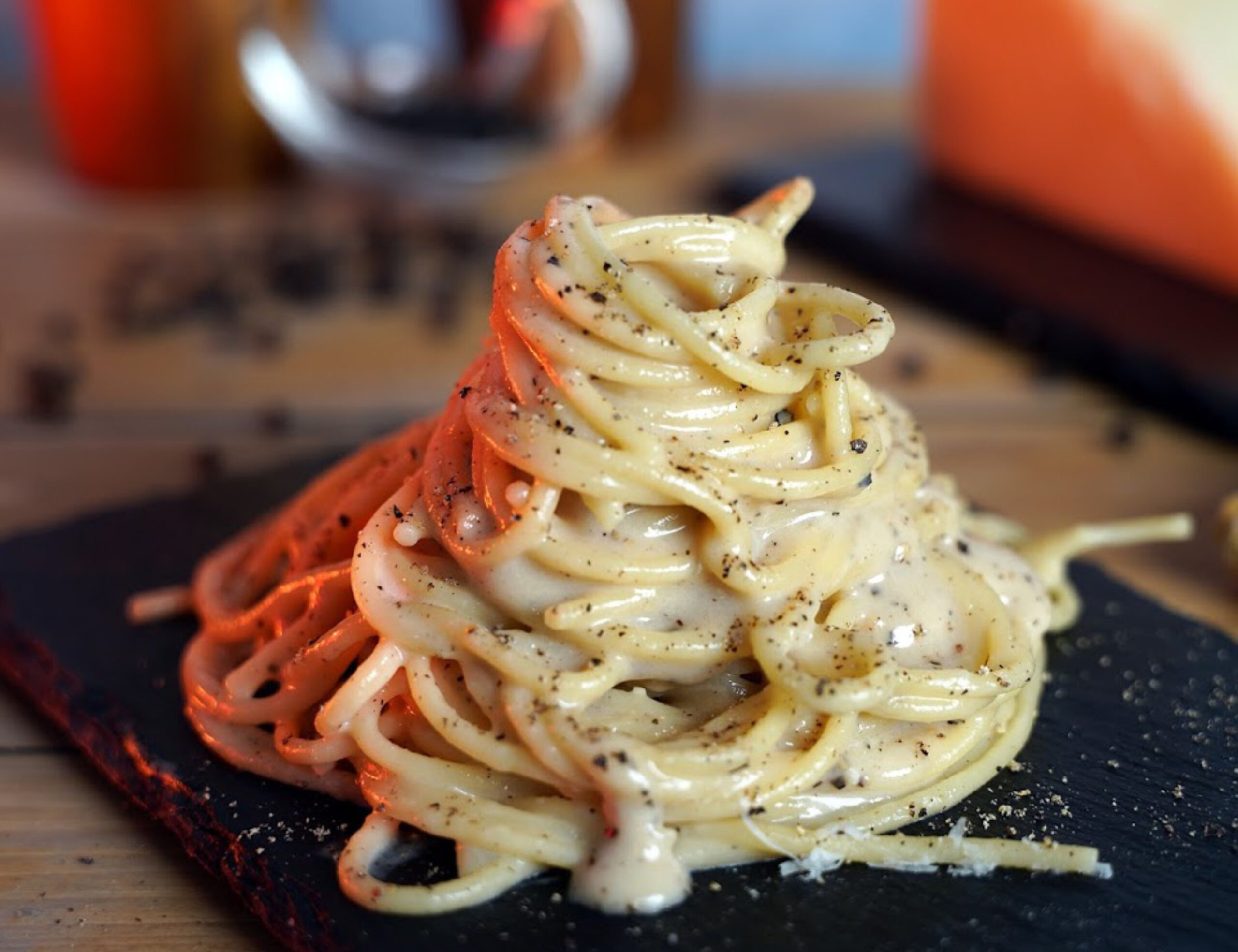
Traditional Roman Spaghetti Cacio e Pepe has just 3 ingredients: Pecorino Romano cheese, black pepper and pasta!
Again, no cream in this one! However outside of Italy, Pasta Cacio e Pepe sauces get their overly white color from the addition of heavy cream, which is not traditional. In Rome, the Cacio e Pepe sauce is simply a creamy emulsion created with hot starchy pasta water and finely grated pecorino cheese. This pasta is typically finished in the pan with a pepper-infused water.
Until you visit Italy, make our authentic Roman Spaghetti Cacio e Pepe recipe at home with this step-by-step recipe:
Spaghetti alla Gricia
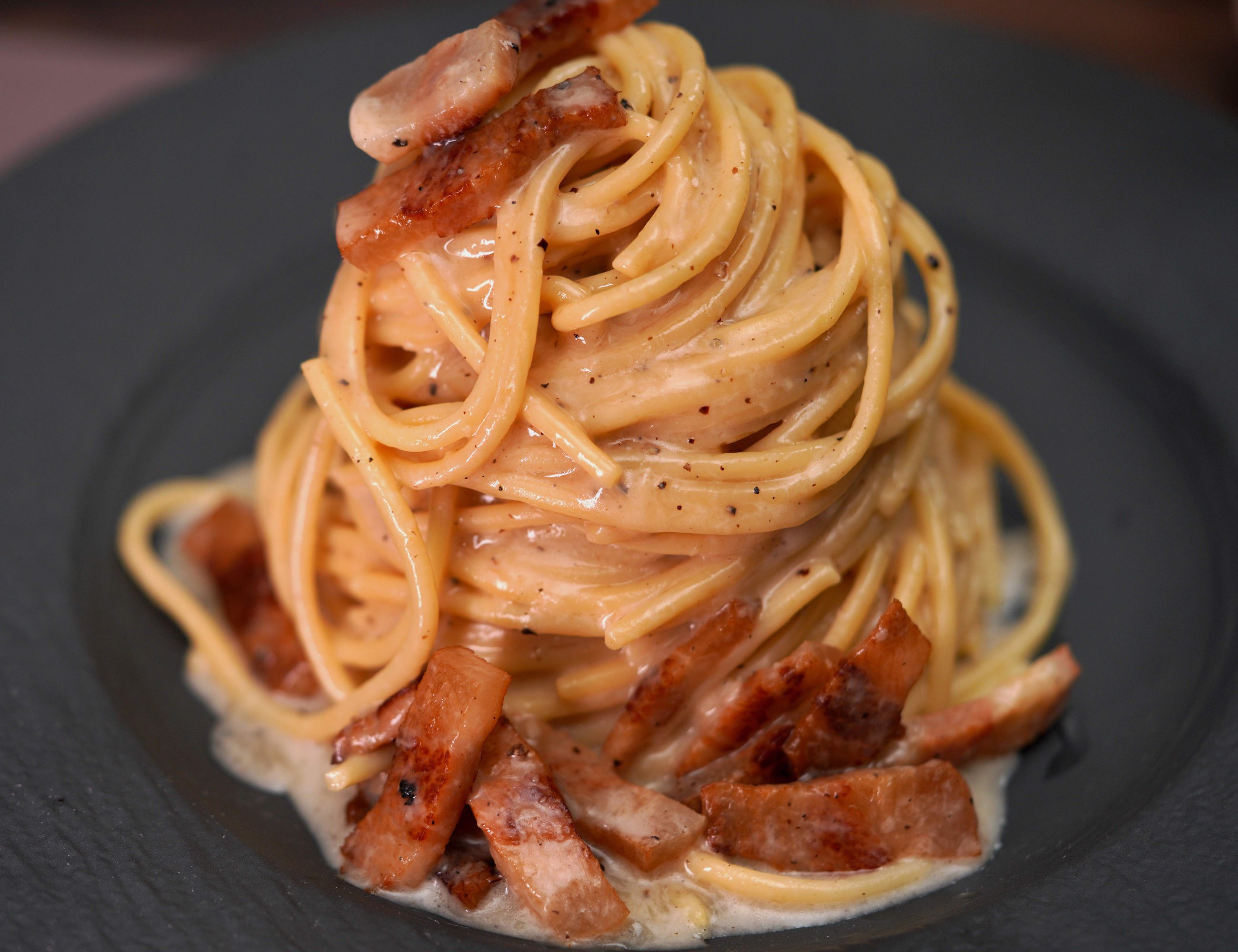
The authentic Pasta alla Gricia recipe features a creamy pecorino romano sauce, black pepper and fine crispy guanciale. Guanciale is definitely more traditional here. However, it’s ok to use pancetta if it’s all you can find . Pasta Gricia can be prepared with a creamy pecorino sauce or with grated pecorino cheese.
Italians think of this Roman dish as the child of Spaghetti Cacio e Pepe and the parent of Amatriciana pasta. And speaking of Amatriciana…
Spaghetti all’ Amatriciana
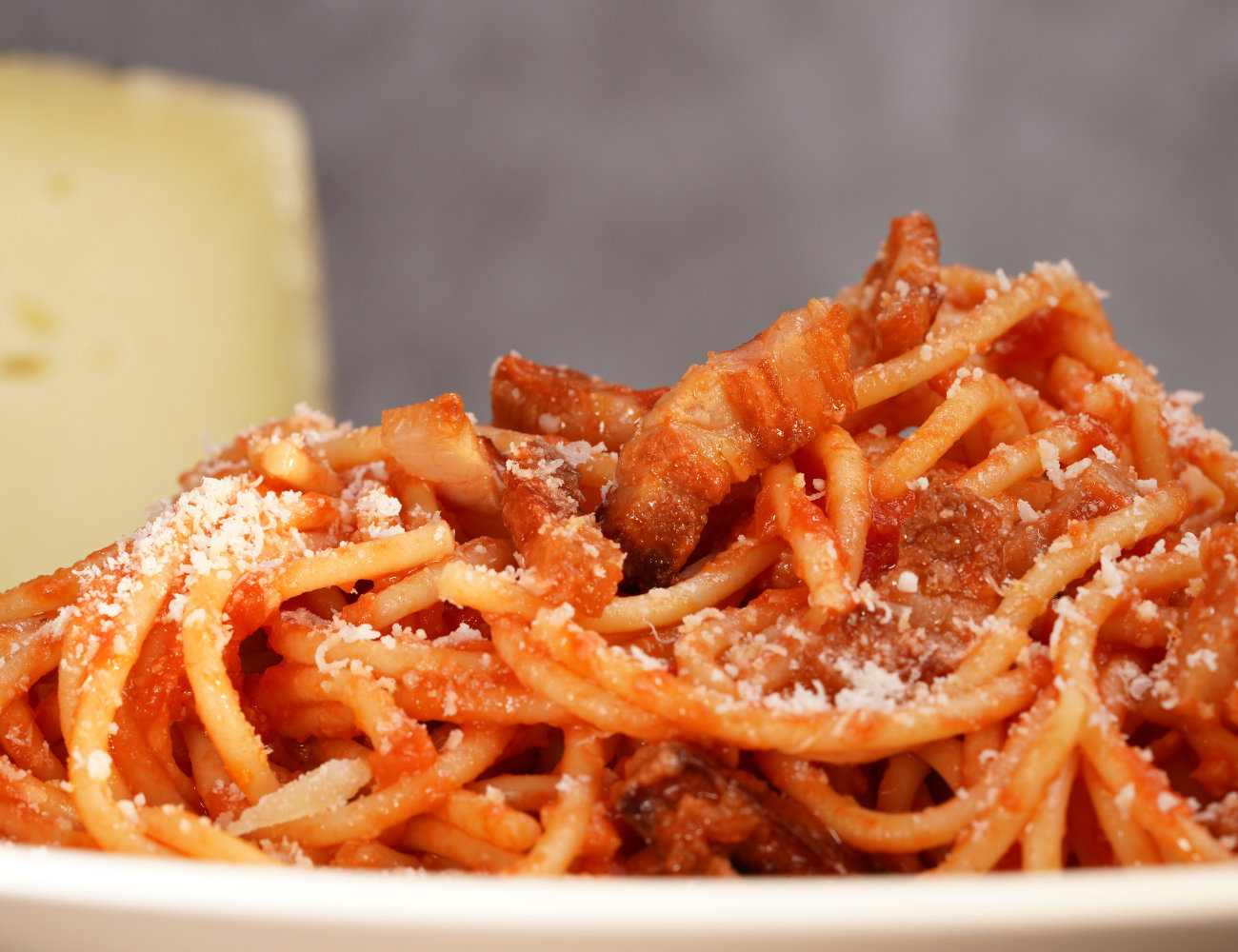
Spaghetti all’Amatriciana is the last pillar of Roman pasta. It is spaghetti with guanciale, white wine, olive oil, red pepper, tomato and pecorino cheese.
Pasta Amatriciana (Pasta all’Amatriciana) dates back to ancient times, when it was likely imported to Rome from the nearby Italian town of Amatrice by immigrants from the region. Pasta Amatriciana is considered the child of Spaghetti alla Gricia, which is essentially Spaghetti Amatriciana without the tomato.
Roman Food Recipes: More Pasta!
Fettuccine Alfredo (Pasta Burro e Parmigiano)
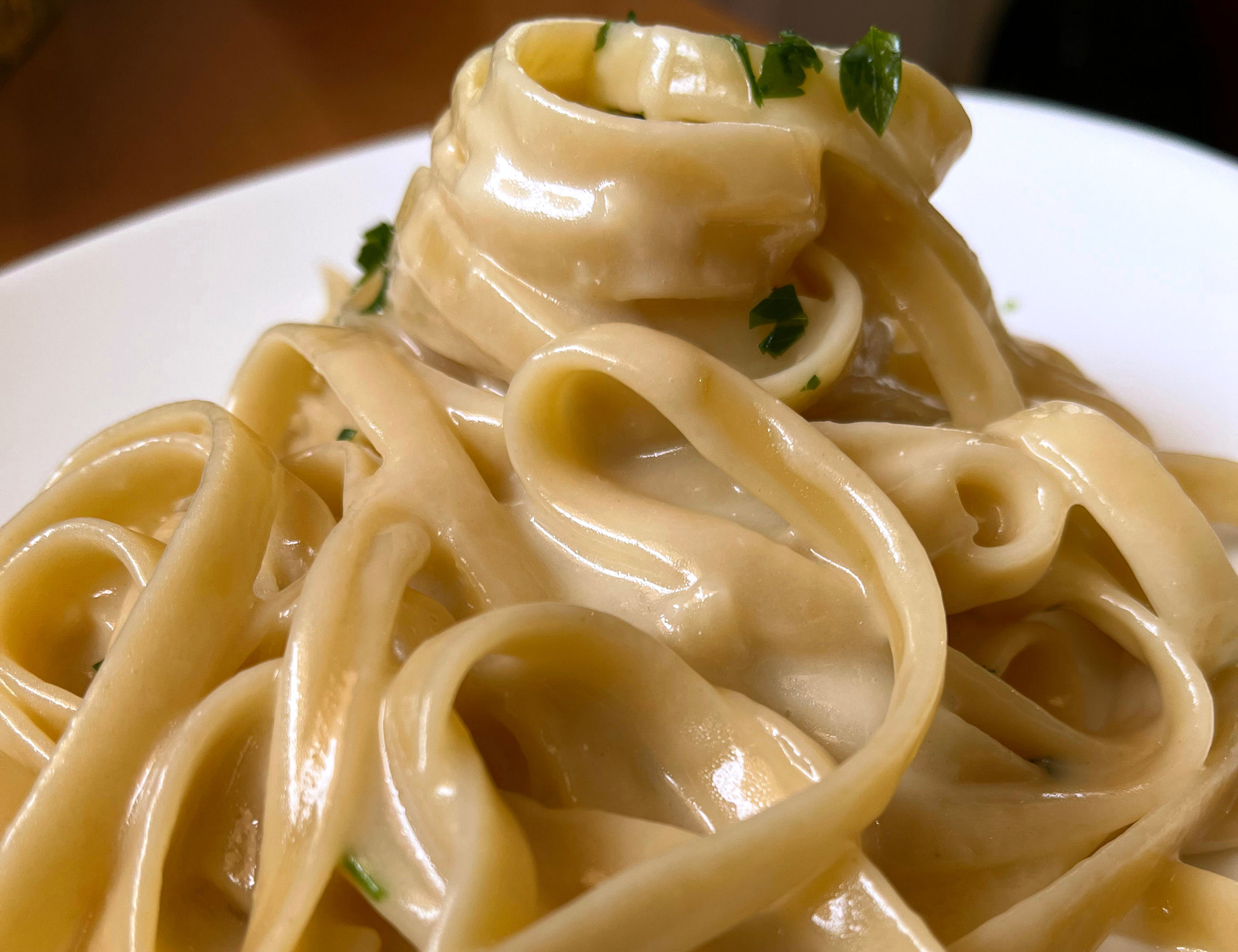
Fettuccine ‘Alfredo’ is one of Italy’s most famous exports in terms of food.However, there’s only one place in Rome where you should ask for this dish as Fettuccine Alfredo. Where? At Il Vero Alfredo in Rome!
Everywhere else in Italy, this dish is simply known as Pasta Burro e Parmigiano. It’s a very old and simple dish made with pasta, butter and parmigiano cheese. In the early 1900’s a Rome restaurant owner (Alfredo di Lelio) popularized this dish in his restaurant. The restaurant prepared the dish in a theatrical manner right at the table. Tourists loved it so much, that restaurants abroad began offering it and it became known abroad as Fettuccine Alfredo. Here’s how to make this dish the right way:
Pope’s Pasta (Fettuccine alla Papalina)
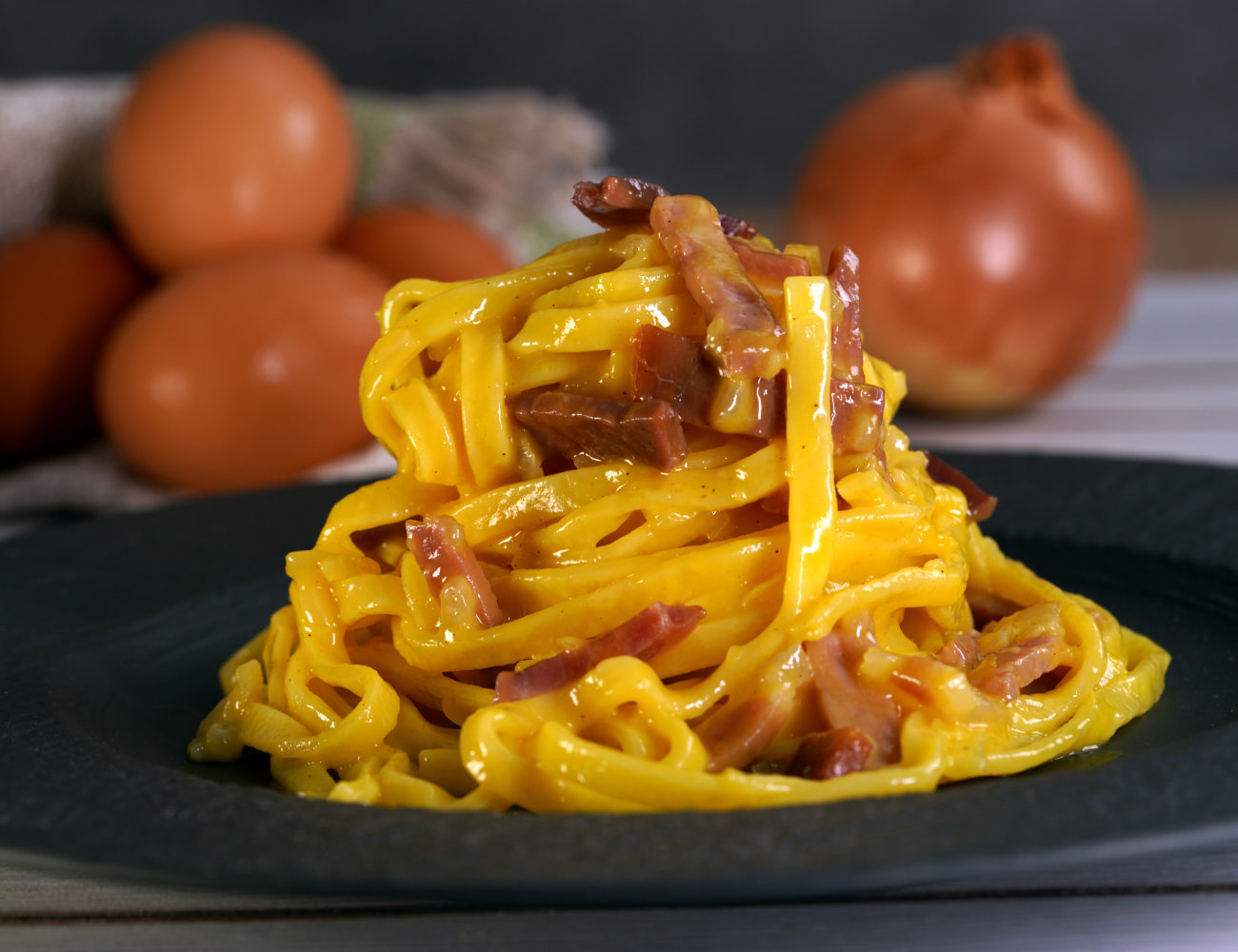
We absolutely love this pasta dish—relatively unknown abroad! You definitely want to try it in Rome (and at home). Just don’t call it ‘Pasta Carbonara’ 😉
This dish translates to Pope’s Fettuccine. The legend is this: Pope Pius XII asked for a ‘lighter’ and more refined version of the traditional Spaghetti Carbonara and a chef created this dish.
One can certainly argue that it is not ‘lighter’ but we can’t argue that it is refined and tasty! Prosciutto replaces the guanciale and Parmigiano cheese is used instead of Pecorino cheese in the egg sauce. Butter and onion round out the ingredients for an unforgettable dish.
Roman Gnocchi (Gnocchi alla Romana)
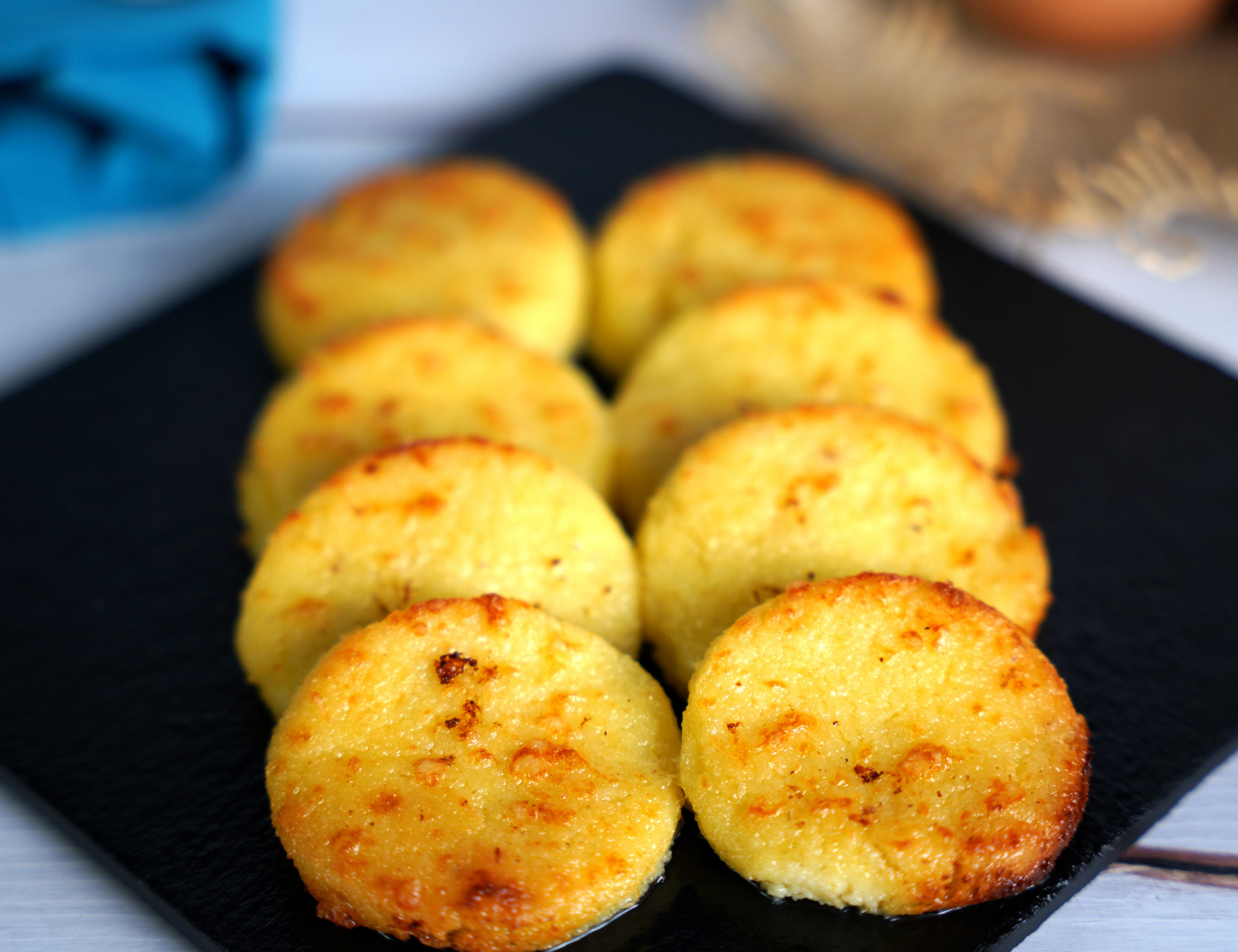
A lesser-known Roman classic are these semolina dumplings called Gnocchi alla Romana. The ultimate comfort food, Gnocchi alla Romana are kind of like baked polenta or grits. However, they feature semolina instead of corn. While these gnocchi don’t look at all like potato gnocchi, they are still called gnocchi. Some historians even argue they probably pre-dated the potato gnocchi.
They are super easy to make at home. Give it a try:
More Roman Food!
Roman Mixed Vegetables (Vignarola Romana)
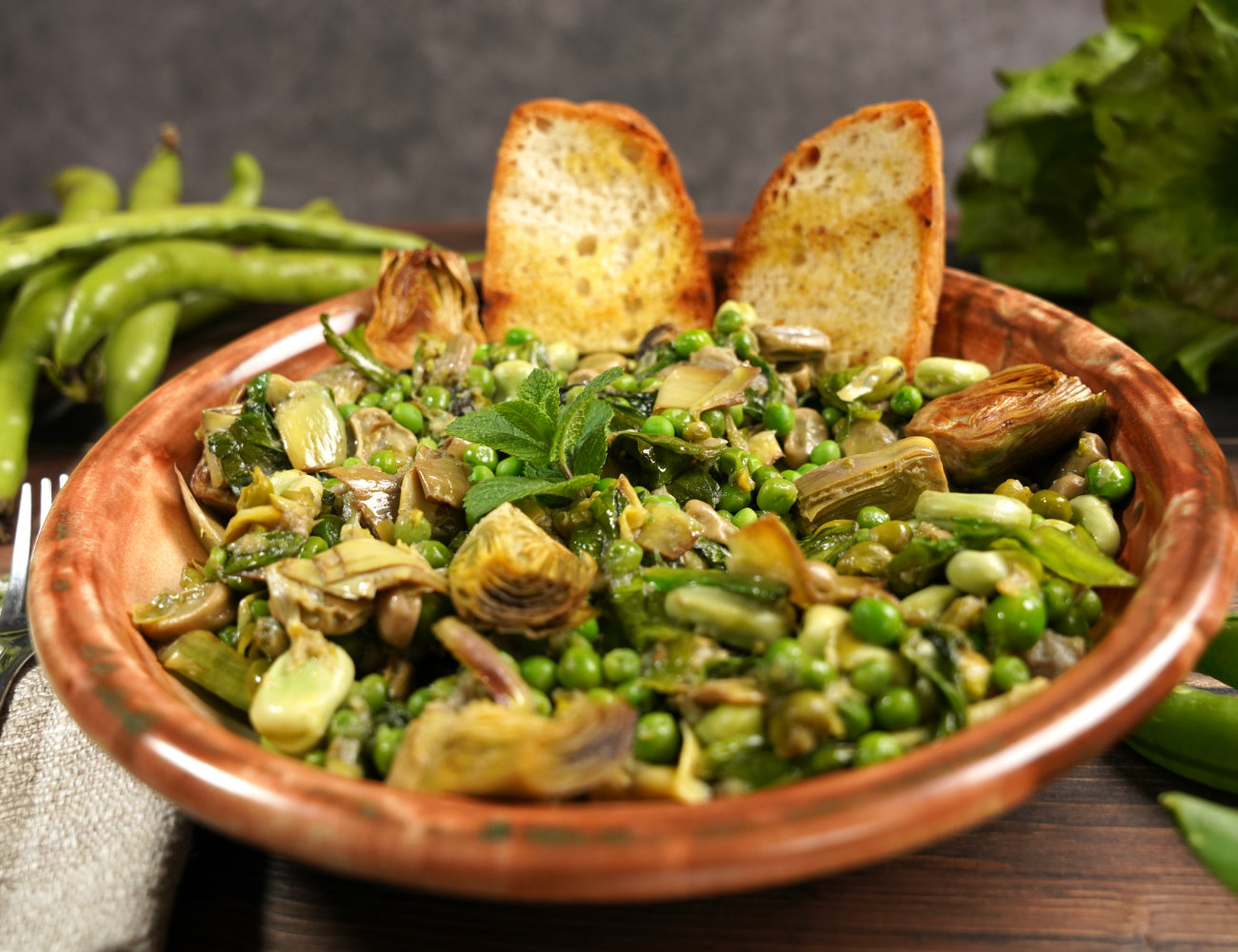
You are more likely to find this incredibly tasty mixed vegetables dish during Spring in Italy. It’s a mix of spring vegetables that traditionally grow ‘between the grape vines‘ : peas, artichokes, lettuce, spring onions and more! Vignarola literally means ‘between the grape rows.’
This dish is traditionally prepared with mint—technically ‘roman mint’ which has been replaced in modern times by spearmint due to menta romana‘s ability to be toxic in large doses. Vignarola is sometimes used as a condiment for pasta. Learn how to make it at home:
Trippa alla Romana ( Italian Tripe )
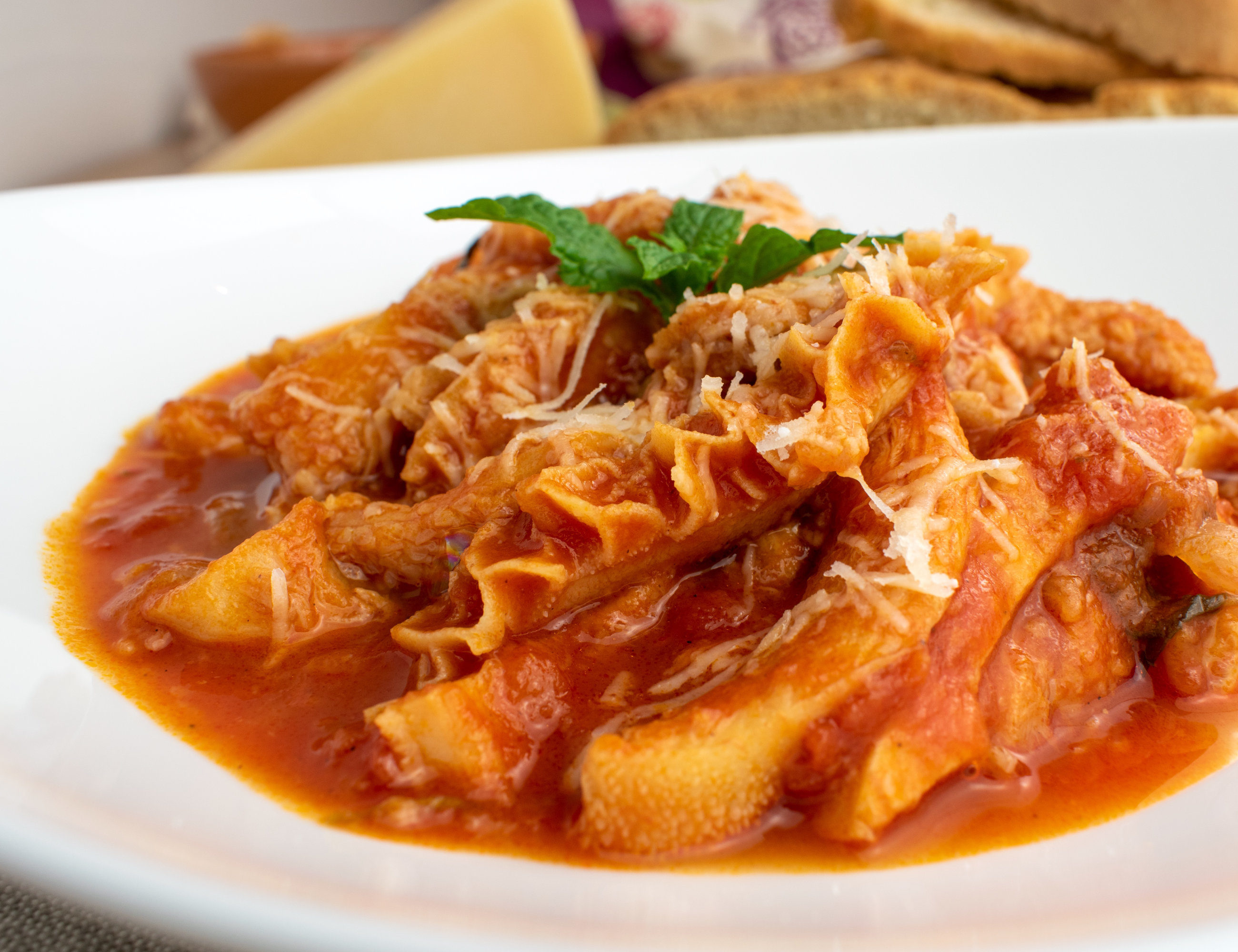
This one won’t be for everyone 🙂 Trippa or tripe is the edible stomachs of an animal —usually cow. Roman style tripe is made with beef tripe and served with an incredible sauce—featuring tomato, mint, white wine and pecorino cheese.
This dish also dates back to ancient Roman times when tripe was an important source of protein for the poor.
Roman Pan Pizza (Pizza alla Teglia)

So called pizza alla teglia are popular throughout Italy these days. However, this style of pizza —baked in a large rectangular pan with short edges—is generally considered to have originated in Rome.
This is the kind of pizza most associated with takeout in Italy. Unlike some other pizza recipes, no official guidelines have been associated with this kind of pan pizza. However, these tend to be the characteristics:
- short edges (the crust is not tall, like the Neapolitan pizza crust for instance)
- height and hydration vary: some ‘Roman’ pizzas are short like a short focaccia, while others are tall and soft like the recipe we show in our pizza making video above!
Check out our pizza making videos to learn how to make a Roman style pan pizza at home:
What are your favorite Rome foods? Let us know in the comments!
Discover More Authentic Italian Pasta Recipes!

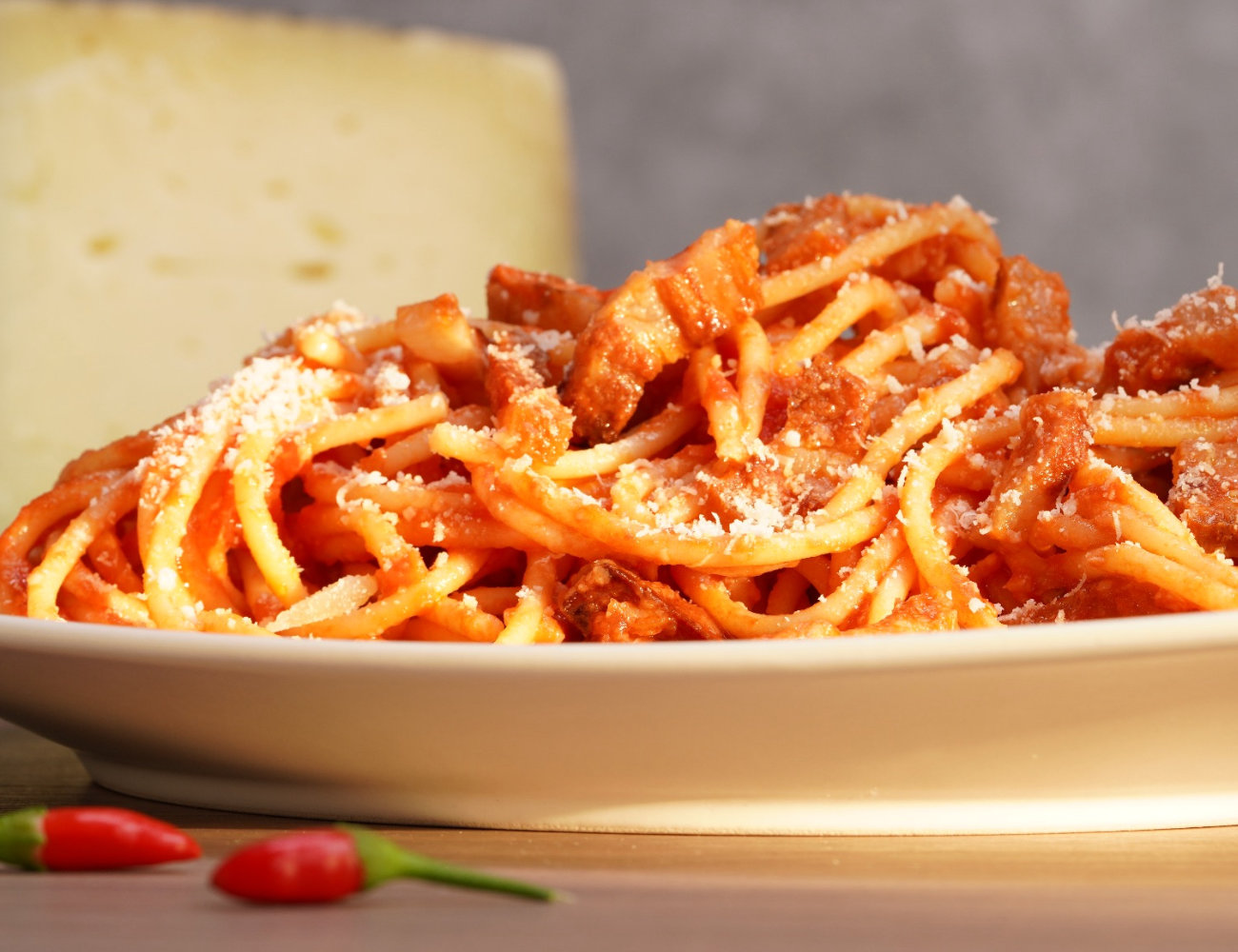
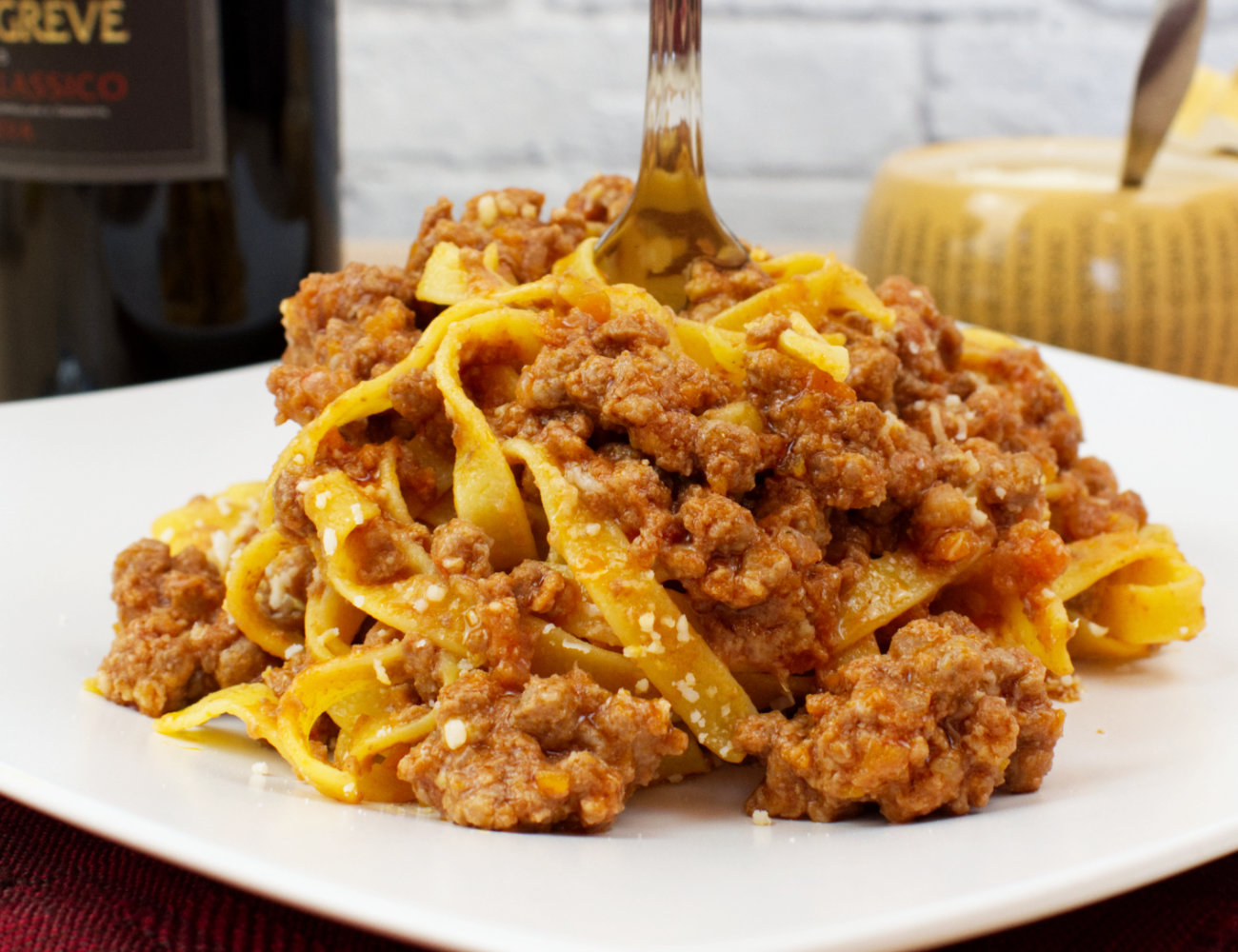
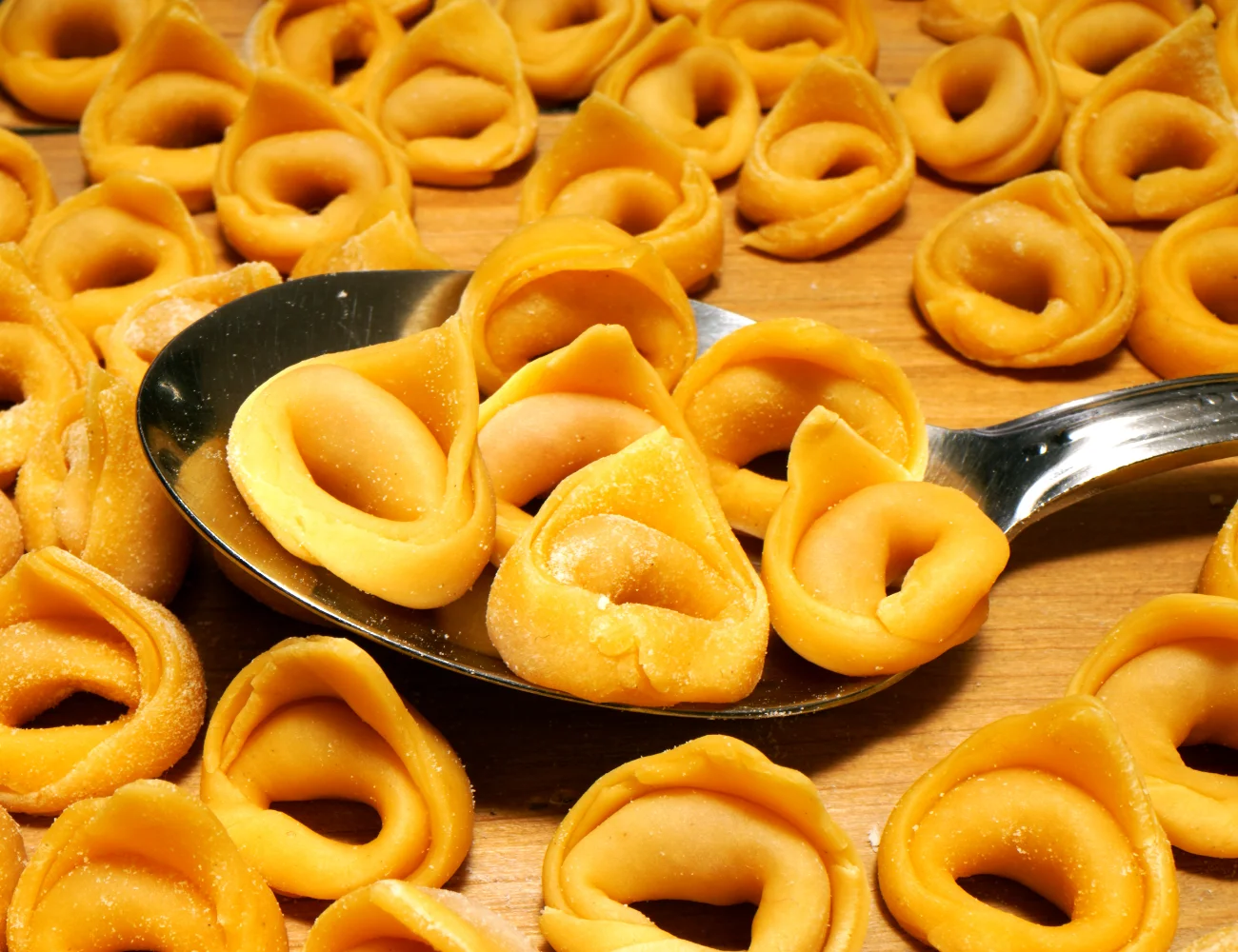

HISTORY OF ALFREDO DI LELIO CREATOR IN 1908 OF “FETTUCCINE ALL’ALFREDO” (“FETTUCCINE ALFREDO”), NOW SERVED BY HIS NEPHEW INES DI LELIO, AT THE RESTAURANT “IL VERO ALFREDO” – “ALFREDO DI ROMA” IN ROME, PIAZZA AUGUSTO IMPERATORE 30
With reference to your article I have the pleasure to tell you the history of my grandfather Alfredo Di Lelio, who is the creator of “Fettuccine all’Alfredo” (“Fettuccine Alfredo”) in 1908 in the “trattoria” run by his mother Angelina in Rome, Piazza Rosa (Piazza disappeared in 1910 following the construction of the Galleria Colonna / Sordi). This “trattoria” of Piazza Rosa has become the “birthplace of fettuccine all’Alfredo”.
More specifically, as is well known to many people who love the “fettuccine all’Alfredo”, this famous dish in the world was invented by Alfredo Di Lelio concerned about the lack of appetite of his wife Ines, who was pregnant with my father Armando (born February 26, 1908).
Alfredo Di Lelio opened his restaurant “Alfredo” in 1914 in Rome and in 1943, during the war, he sold the restaurant to others outside his family.
In 1948 Alfredo Di Lelio decided to reopen with his son Armando his restaurant in Piazza Augusto Imperatore n.30 “Il Vero Alfredo” (“Alfredo di Roma”), whose fame in the world has been strengthened by his nephew Alfredo and that now managed by me, with the famous “gold cutlery” (fork and spoon gold) donated in 1927 by two well-known American actors Mary Pickford and Douglas Fairbanks (in gratitude for the hospitality).
See the website of “Il Vero Alfredo”.
I must clarify that other restaurants “Alfredo” in Rome do not belong and are out of my brand “Il Vero Alfredo – Alfredo di Roma”.
The brand “Il Vero Alfredo – Alfredo di Roma” is present in Mexico with a restaurant in Mexico City and a trattoria in Cozumel on the basis of franchising relationships with the Group Hotel Presidente Intercontinental Mexico.
The restaurant “Il Vero Alfredo” is in the Registry of “Historic Shops of Excellence – section on Historical Activities of Excellence” of the Municipality of Roma Capitale.
Best regards Ines Di Lelio
IN ITALIANO
STORIA DI ALFREDO DI LELIO, CREATORE DELLE “FETTUCCINE ALL’ALFREDO” (“FETTUCCINE ALFREDO”), E DELLA SUA TRADIZIONE FAMILIARE PRESSO IL RISTORANTE “IL VERO ALFREDO” (“ALFREDO DI ROMA”) IN PIAZZA AUGUSTO IMPERATORE A ROMA
Con riferimento al Vostro articolo ho il piacere di raccontarVi la storia di mio nonno Alfredo Di Lelio, inventore delle note “fettuccine all’Alfredo” (“Fettuccine Alfredo”).
Alfredo Di Lelio, nato nel settembre del 1883 a Roma in Vicolo di Santa Maria in Trastevere, cominciò a lavorare fin da ragazzo nella piccola trattoria aperta da sua madre Angelina in Piazza Rosa, un piccolo slargo (scomparso intorno al 1910) che esisteva prima della costruzione della Galleria Colonna (ora Galleria Sordi).
Il 1908 fu un anno indimenticabile per Alfredo Di Lelio: nacque, infatti, suo figlio Armando e videro contemporaneamente la luce in tale trattoria di Piazza Rosa le sue “fettuccine”, divenute poi famose in tutto il mondo. Questa trattoria è “the birthplace of fettuccine all’Alfredo”.
Alfredo Di Lelio inventò le sue “fettuccine” per dare un ricostituente naturale, a base di burro e parmigiano, a sua moglie (e mia nonna) Ines, prostrata in seguito al parto del suo primogenito (mio padre Armando). Il piatto delle “fettuccine” fu un successo familiare prima ancora di diventare il piatto che rese noto e popolare Alfredo Di Lelio, personaggio con “i baffi all’Umberto” ed i calli alle mani a forza di mischiare le sue “fettuccine” davanti ai clienti sempre più numerosi.
Nel 1914, a seguito della chiusura di detta trattoria per la scomparsa di Piazza Rosa dovuta alla costruzione della Galleria Colonna, Alfredo Di Lelio decise di aprire a Roma il suo ristorante “Alfredo” che gestì fino al 1943, per poi cedere l’attività a terzi estranei alla sua famiglia.
Ma l’assenza dalla scena gastronomica di Alfredo Di Lelio fu del tutto transitoria. Infatti nel 1948 riprese il controllo della sua tradizione familiare ed aprì, insieme al figlio Armando, il ristorante “Il Vero Alfredo” (noto all’estero anche come “Alfredo di Roma”) in Piazza Augusto Imperatore n.30 (cfr. il sito web di Il Vero Alfredo).
Con l’avvio del nuovo ristorante Alfredo Di Lelio ottenne un forte successo di pubblico e di clienti negli anni della “dolce vita”. Successo, che, tuttora, richiama nel ristorante un flusso continuo di turisti da ogni parte del mondo per assaggiare le famose “fettuccine all’Alfredo” al doppio burro da me servite, con
l’impegno di continuare nel tempo la tradizione familiare dei miei cari maestri, nonno Alfredo, mio padre Armando e mio fratello Alfredo. In particolare le fettuccine sono servite ai clienti con 2 “posate d’oro”: una forchetta ed un cucchiaio d’oro regalati nel 1927 ad Alfredo dai due noti attori americani M. Pickford e D. Fairbanks (in segno di gratitudine per l’ospitalità).
Desidero precisare che altri ristoranti “Alfredo” a Roma non appartengono e sono fuori dal mio brand di famiglia.
Il brand “Il Vero Alfredo – Alfredo di Roma” è presente in Messico con un ristorante a Città del Messico e una trattoria a Cozumel sulla base di rapporti di franchising con il Group Hotel Presidente Intercontinental Mexico.
Vi informo che il Ristorante “Il Vero Alfredo” è presente nell’Albo dei “Negozi Storici di Eccellenza – sezione Attività Storiche di Eccellenza” del Comune di Roma Capitale.
Grata per la Vostra attenzione ed ospitalità nel Vostro interessante blog, cordiali saluti
Ines Di Lelio